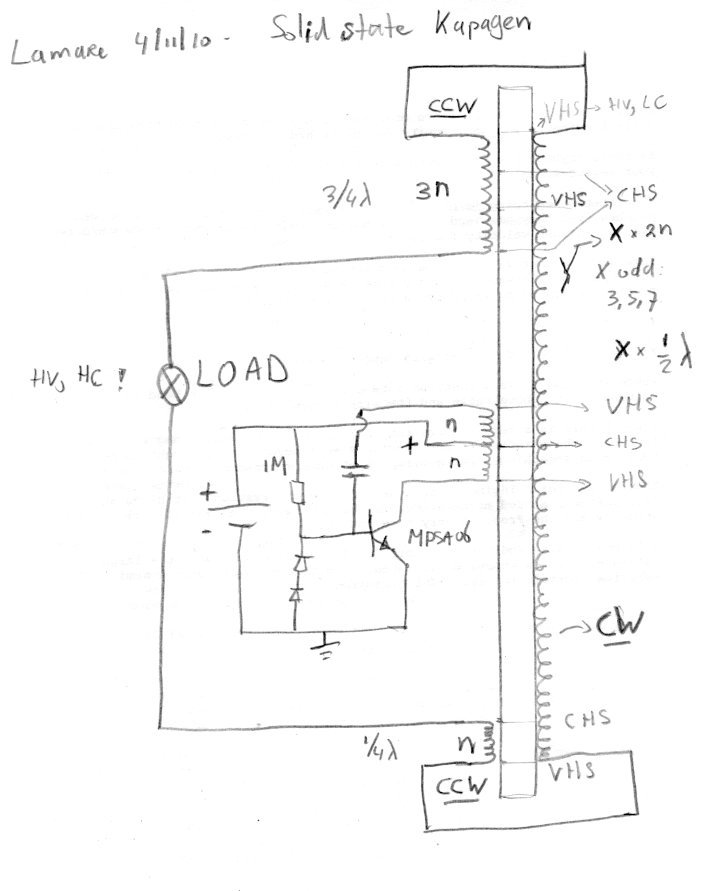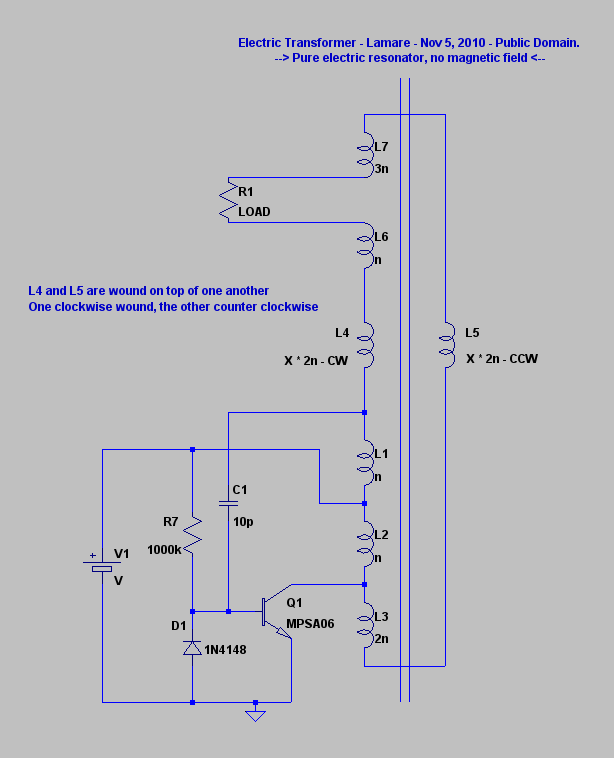
Originally posted by xee2
View Post
EDIT.... your right my schematic and yours are the same . I was tired .the transistor symbole was flipped on mine and the collector IS on the primary . Sheesh . Sorry about that .
 STill no work more than 4 seconds with the lamp removed and transistor biased correctly .I'll pick up on it later when more info is availible . Remember lighsaber did say it worked with copper wire bifialar so a stubblefield coil with iron and cotton wire shouldnt be needed . it will oscillate on my scope for about 20 seconds but after 1 second no usuable power is seen on my replication as one would suspect the power in the cap fade quickly thus far.
STill no work more than 4 seconds with the lamp removed and transistor biased correctly .I'll pick up on it later when more info is availible . Remember lighsaber did say it worked with copper wire bifialar so a stubblefield coil with iron and cotton wire shouldnt be needed . it will oscillate on my scope for about 20 seconds but after 1 second no usuable power is seen on my replication as one would suspect the power in the cap fade quickly thus far. Albert









Comment